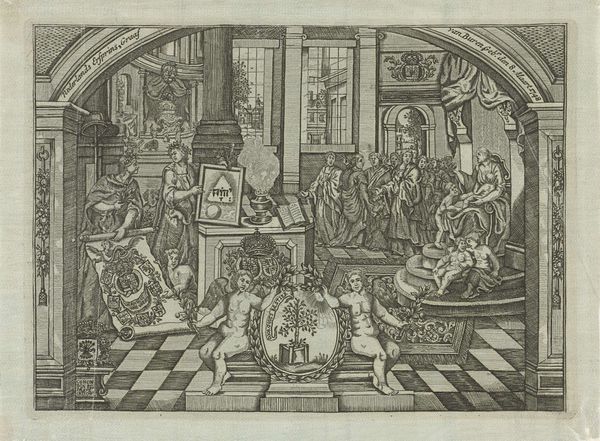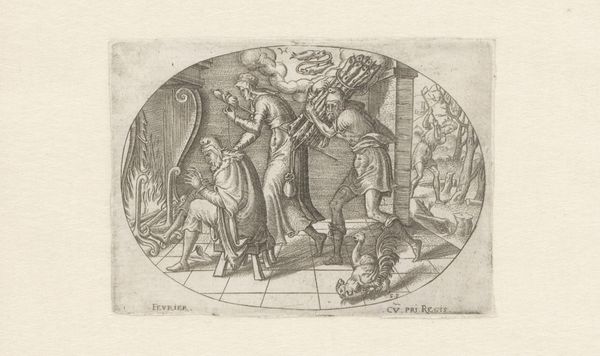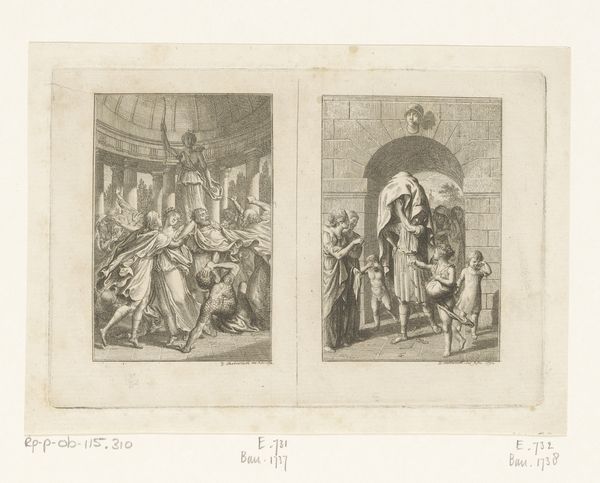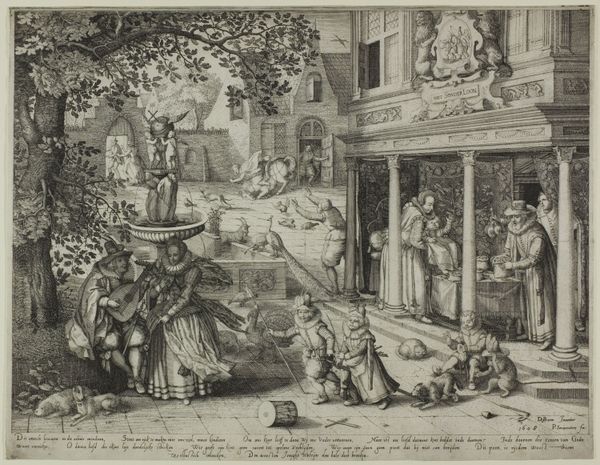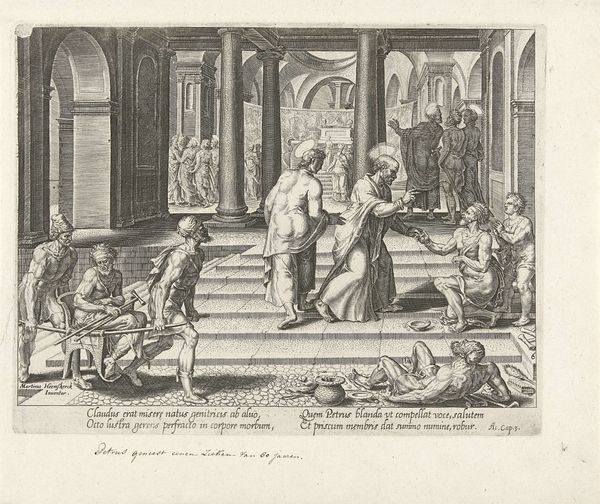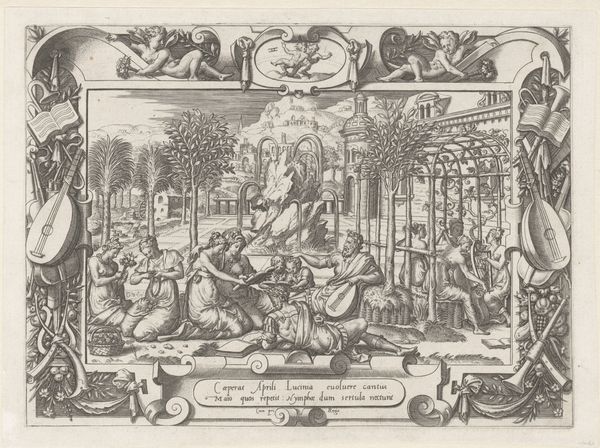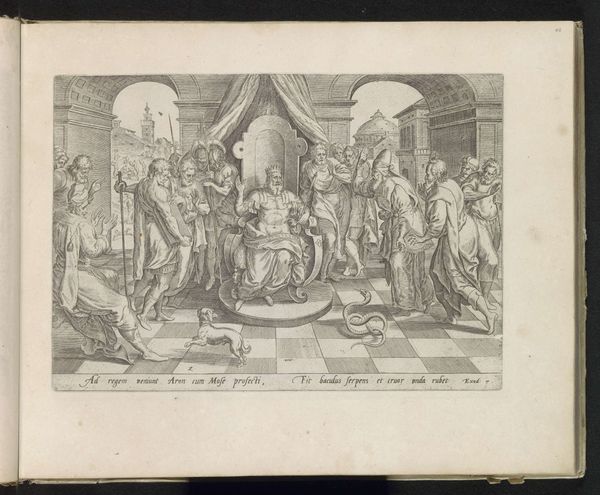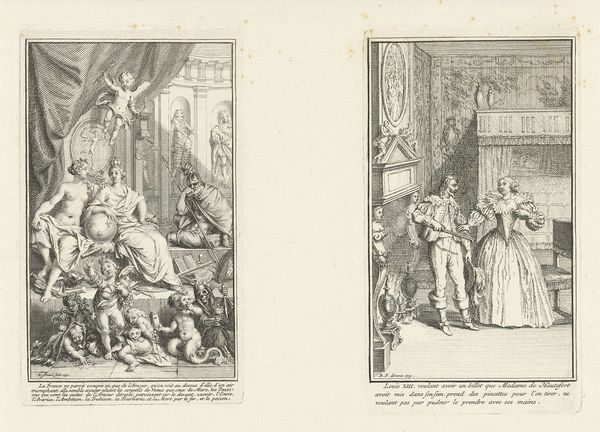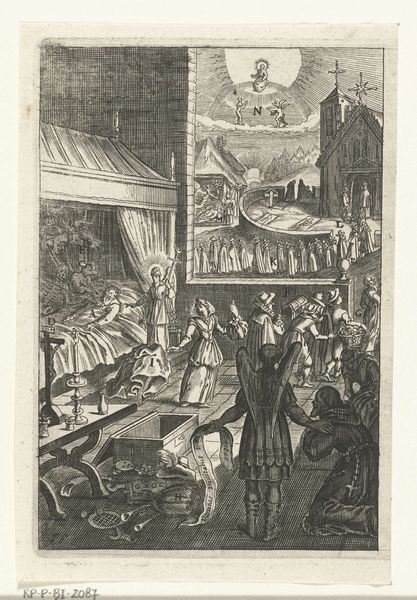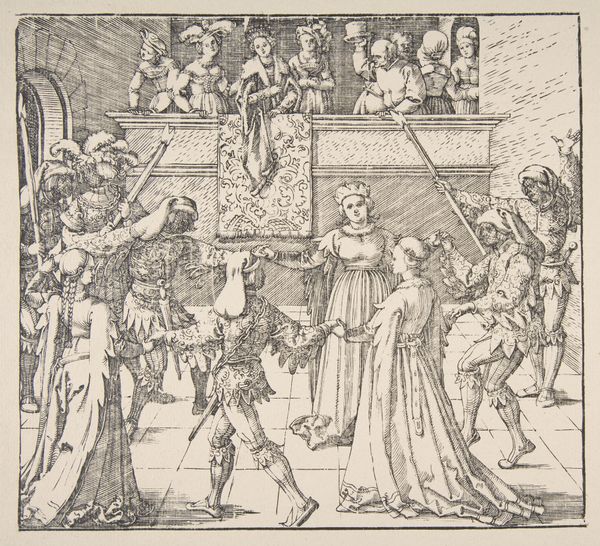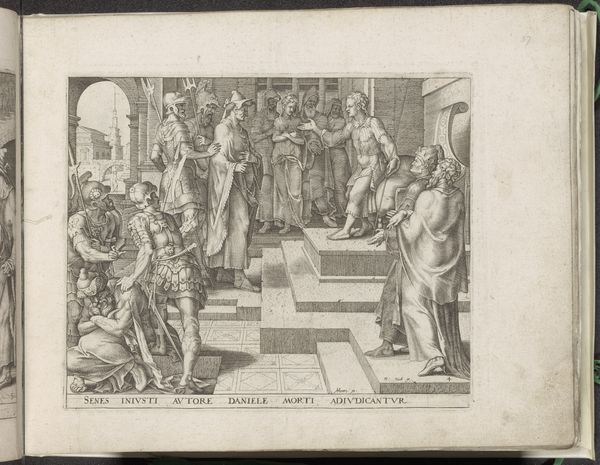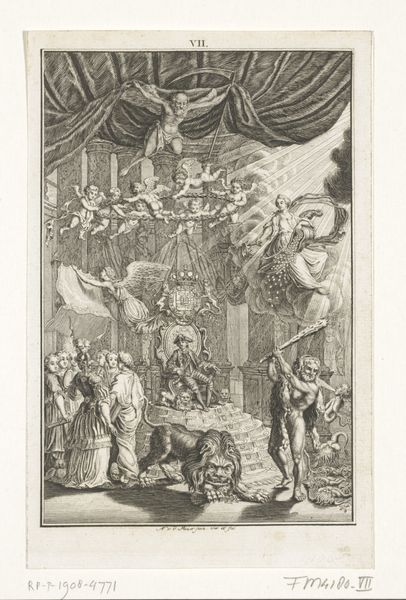
print, intaglio, engraving
#
pen drawing
# print
#
intaglio
#
figuration
#
11_renaissance
#
genre-painting
#
northern-renaissance
#
engraving
Dimensions: height 221 mm, width 316 mm
Copyright: Rijks Museum: Open Domain
Curator: Let's turn our attention to this bustling scene, an engraving called "Het Grote Bal", or "The Grand Ball", created around 1500 by the artist known only as Monogrammist MZ. Editor: My first impression is how intricately detailed this is for such a small, monochrome work. It really feels like a snapshot of courtly life, full of individuals each with their own story. I find the architectural composition almost oppressive, particularly the height of the ceilings and the sharp geometry in contrast to the softness of the garments. Curator: Indeed, this engraving offers a glimpse into the social rituals and visual culture of the early 16th century. Look at the costumes, the musicians in the balcony, and the way people interact, It really reads as a depiction of social hierarchy, of people positioned relative to each other based on rank and wealth. Notice the figures in the balcony seemingly watching, overseeing. Editor: Absolutely. There's definitely an element of surveillance at play. And I'm struck by the body language - while the scene seems active, most of the figures appear self-contained, almost isolated despite being in such close proximity. It reminds me how restricted gender roles were, seeing couples walking stiffly or people quietly in a corner, while those overseeing remain at the top of society in the literal higher floors. It sparks reflection on agency and constraints within such social constructs. Curator: That's an important point. Printmaking like this played a crucial role in disseminating images and ideas during the Renaissance, it’s reasonable to assume MZ intended to convey a certain message to a wider audience. What meaning that might hold becomes an important element to the culture of that moment. It may have functioned as propaganda for a particular party, or something else entirely! Editor: I agree. Also, I can’t help but feel there’s a tension here. On one hand, it portrays opulence and elegance, but on the other, the expressions and spatial arrangements create a sense of distance, almost unease, hinting at a critique, maybe, of the very world it depicts? Curator: That's a very astute observation, and one of the enduring fascinations of this piece, perhaps. I will say, that having analyzed it in context with other works from that time and location, it is most certainly capturing a slice of the world back then! Editor: Thanks, it makes me ponder what these figures would make of our modern lives and all the struggles against those outdated gender roles and biases we still face to this day. It speaks to both a different era while also reminding us of the continuities.
Comments
No comments
Be the first to comment and join the conversation on the ultimate creative platform.
